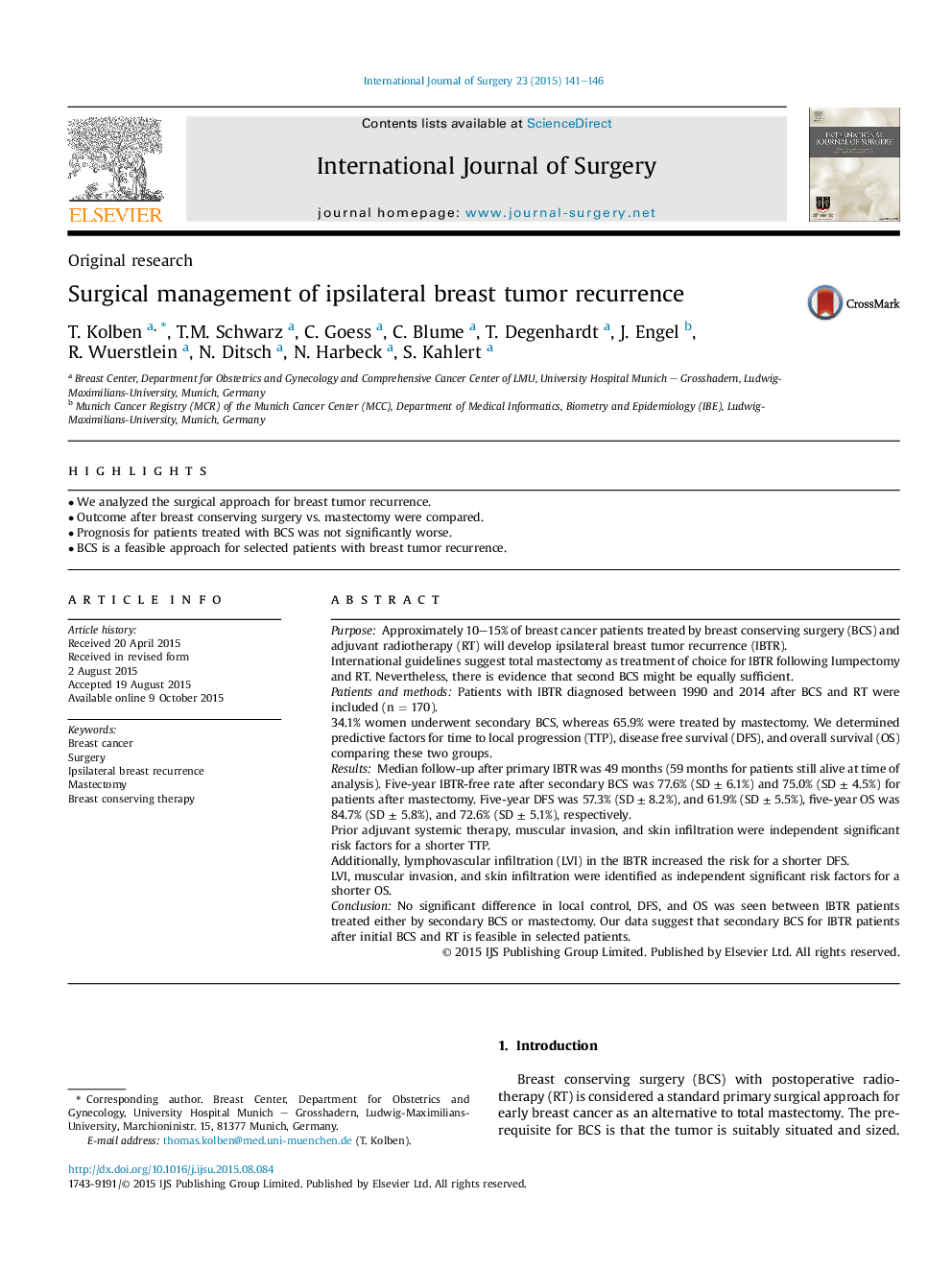| کد مقاله | کد نشریه | سال انتشار | مقاله انگلیسی | نسخه تمام متن |
|---|---|---|---|---|
| 6251266 | 1611968 | 2015 | 6 صفحه PDF | دانلود رایگان |
- We analyzed the surgical approach for breast tumor recurrence.
- Outcome after breast conserving surgery vs. mastectomy were compared.
- Prognosis for patients treated with BCS was not significantly worse.
- BCS is a feasible approach for selected patients with breast tumor recurrence.
PurposeApproximately 10-15% of breast cancer patients treated by breast conserving surgery (BCS) and adjuvant radiotherapy (RT) will develop ipsilateral breast tumor recurrence (IBTR).International guidelines suggest total mastectomy as treatment of choice for IBTR following lumpectomy and RT. Nevertheless, there is evidence that second BCS might be equally sufficient.Patients and methodsPatients with IBTR diagnosed between 1990 and 2014 after BCS and RT were included (n = 170).34.1% women underwent secondary BCS, whereas 65.9% were treated by mastectomy. We determined predictive factors for time to local progression (TTP), disease free survival (DFS), and overall survival (OS) comparing these two groups.ResultsMedian follow-up after primary IBTR was 49 months (59 months for patients still alive at time of analysis). Five-year IBTR-free rate after secondary BCS was 77.6% (SD ± 6.1%) and 75.0% (SD ± 4.5%) for patients after mastectomy. Five-year DFS was 57.3% (SD ± 8.2%), and 61.9% (SD ± 5.5%), five-year OS was 84.7% (SD ± 5.8%), and 72.6% (SD ± 5.1%), respectively.Prior adjuvant systemic therapy, muscular invasion, and skin infiltration were independent significant risk factors for a shorter TTP.Additionally, lymphovascular infiltration (LVI) in the IBTR increased the risk for a shorter DFS.LVI, muscular invasion, and skin infiltration were identified as independent significant risk factors for a shorter OS.ConclusionNo significant difference in local control, DFS, and OS was seen between IBTR patients treated either by secondary BCS or mastectomy. Our data suggest that secondary BCS for IBTR patients after initial BCS and RT is feasible in selected patients.
Journal: International Journal of Surgery - Volume 23, Part A, November 2015, Pages 141-146
